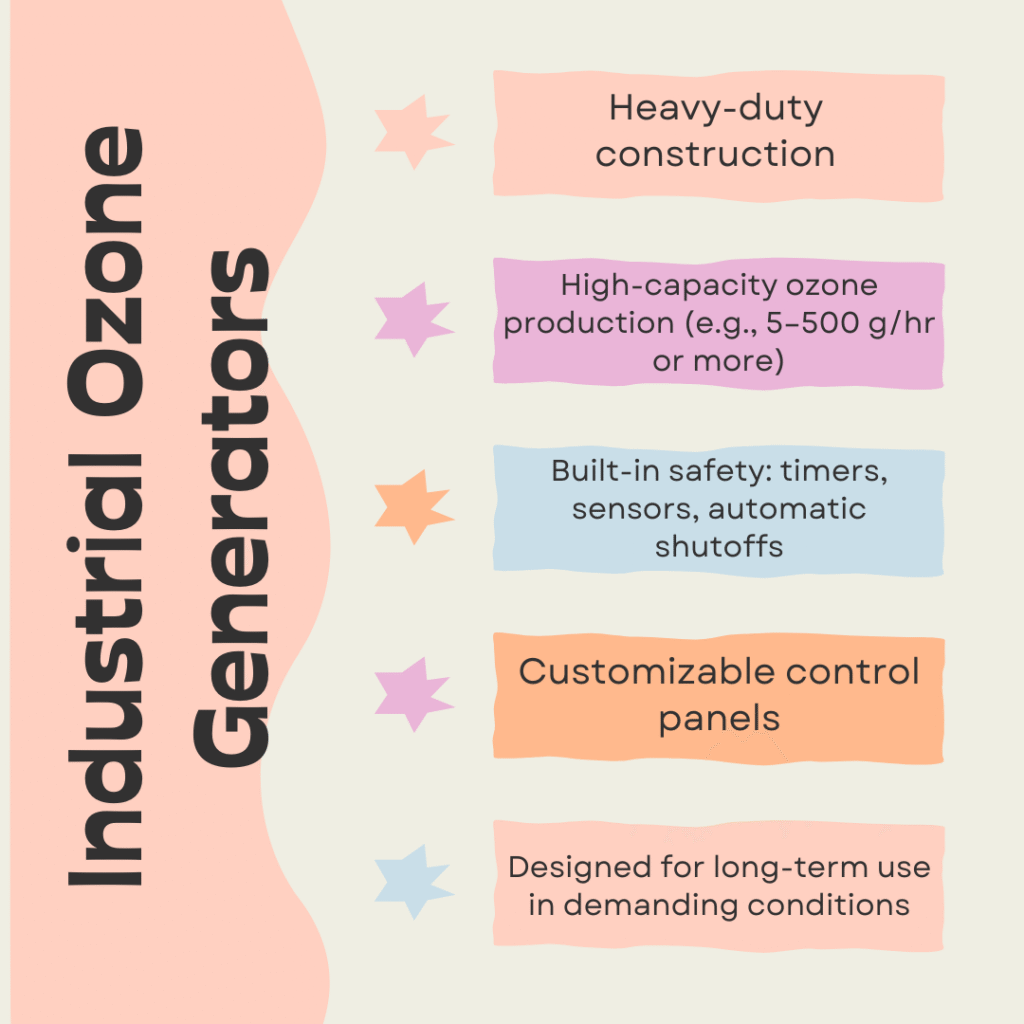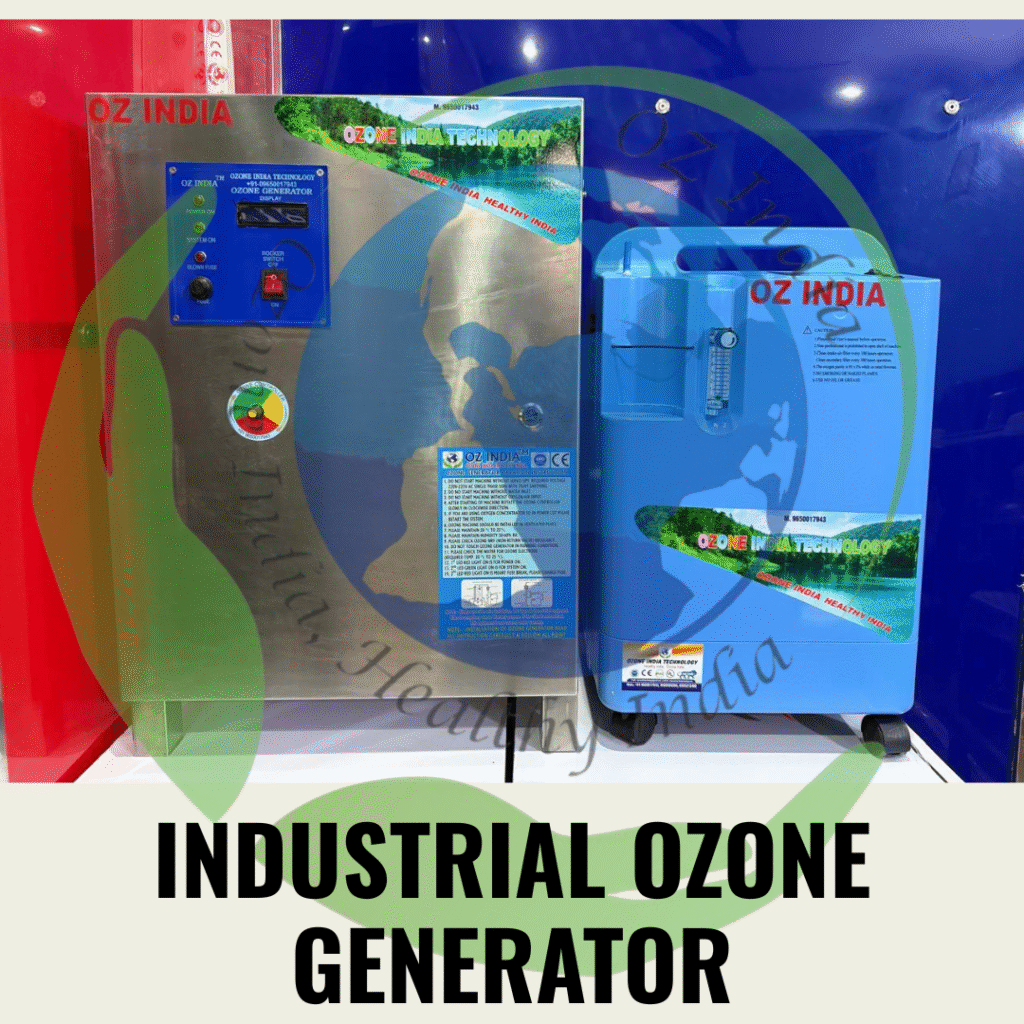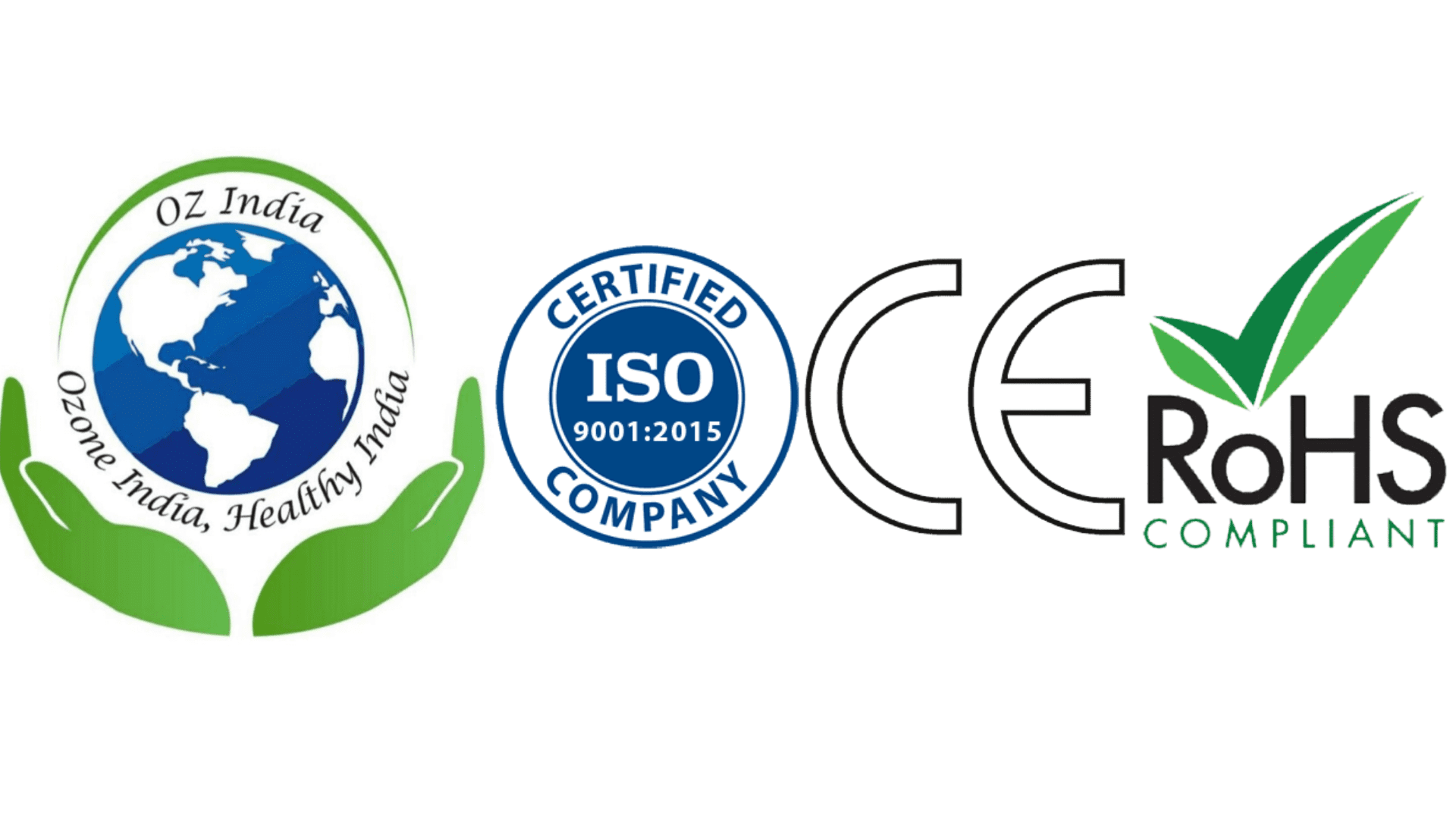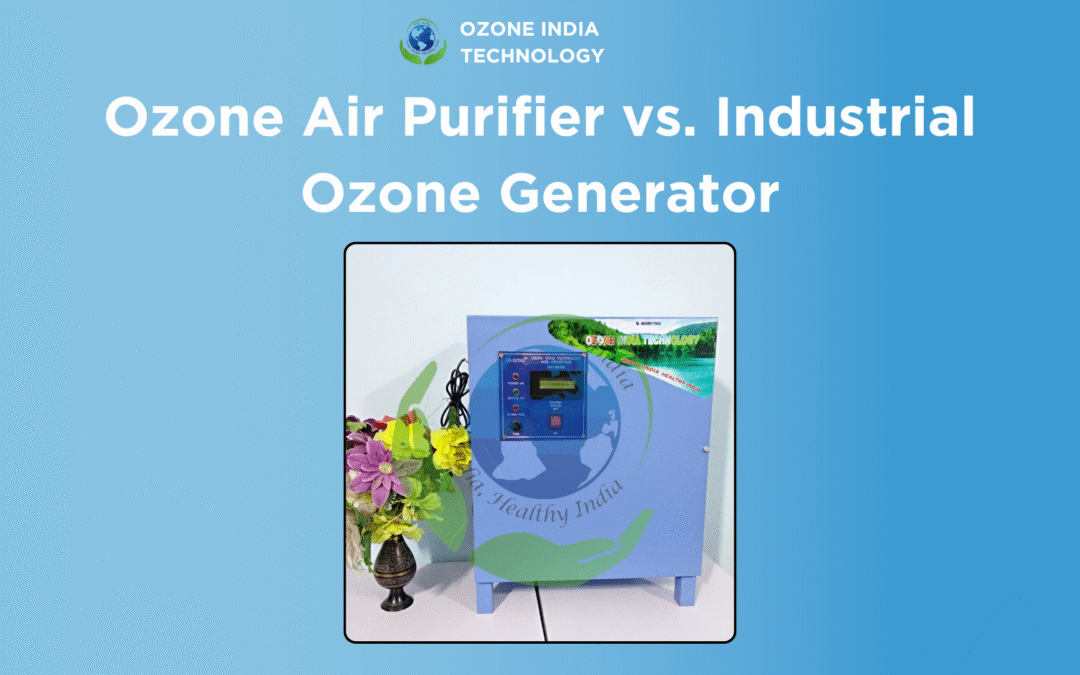Introduction
Are you considering an “ozone machine” for your business but unsure of what kind to get? The term ozone air purifier appears everywhere online, especially in search results, yet it rarely explains what businesses truly need.
For many, ozone brings to mind both powerful purification and health concerns. The confusion often arises when people assume that all ozone-based devices serve the same purpose. In reality, there’s a world of difference between consumer ozone air purifiers and industrial ozone generators—both in how they work and what they’re meant to achieve.
Choosing the wrong solution can lead to wasted investment, health risks, and unmet expectations. Especially for businesses dealing with large spaces, strong odours, water purification, or sanitation needs, understanding this distinction is critical.
This 2025 Guide will help clarify the differences between ozone air purifiers and industrial ozone generators, explain why it matters for your business, and show you how to make the right decision.
Understanding Ozone: A Quick Primer
A. What is Ozone (O₃)?
Ozone is a molecule made up of three oxygen atoms. Naturally found in the Earth’s atmosphere, ozone has strong oxidising properties, which means it can break down bacteria, viruses, mould, and odour-causing particles. This makes it ideal for purification.
It is commonly used in both air and water treatment processes due to its ability to react quickly and leave no harmful residue. Ozone occurs naturally in the upper atmosphere, forming a protective layer, but at ground level, it must be managed carefully due to its reactive nature.
Because ozone reverts to oxygen after its reaction, it’s considered an environmentally friendly alternative to chemical disinfectants, especially in water and food processing industries.
Its application in sanitation is effective against a wide range of pathogens, including bacteria, viruses, and fungi, making it a preferred choice in high-standard environments.
The versatility of ozone in various industries highlights its importance, but its power also requires responsible and knowledgeable use, especially in business settings.
Real-World Applications of Ozone:
- Food Industry: Ozone is used to sanitise processing equipment, extend the shelf life of produce, and disinfect packaging surfaces without harmful chemical residues.
- Water Treatment Plants: Municipal and industrial systems use ozone to remove organic material, bacteria, and even pharmaceutical residues from drinking water and wastewater.
- Hospitals and Clinics: Used for surface disinfection and sterilisation of medical tools, ozone helps reduce the risk of healthcare-associated infections.
- Hospitality Sector: Hotels use ozone to remove cigarette smoke and other persistent odours from rooms and laundry.
- Cold Storage & Warehousing: Ozone helps in preventing mould and bacterial growth in temperature-controlled storage spaces.
These real-world uses show how businesses across sectors harness ozone’s powerful oxidative properties to meet hygiene standards, improve air and water quality, and operate more sustainably.
B. Important Safety Note
While ozone is effective, high concentrations can be harmful if inhaled. That’s why controlled usage—especially in enclosed or occupied spaces—is essential, particularly for industrial applications.
Ozone Air Purifiers: The Consumer-Grade Solution
A. Definition and Purpose
Ozone air purifiers are designed for home or small office environments. They’re commonly marketed to eliminate pet odors, smoke, mold, or allergens in indoor spaces.
B. How They (Typically) Work
Most ozone air purifiers use either:
- Corona discharge: This method uses a low-power electric arc to split oxygen molecules (O₂) into individual oxygen atoms, which then recombine to form ozone (O₃). These units are cost-effective but have limited ozone output.
- UV light method: This technique involves ultraviolet light that breaks down oxygen molecules to produce ozone. While generally safer, this method produces less ozone and is slower in treating odours.
These systems are optimised for continuous low-output generation to avoid over-ozonation but are not effective for treating strong industrial-level pollutants or odours.
C. Key Characteristics
- Compact and portable: These units are small, lightweight, and easy to carry around, suitable for single rooms.
- Low cost (usually under ₹10,000): They are affordable and targeted toward household consumers.
- Easy to use, plug-and-play style: Most require no installation and come with simple on/off switches.
- No advanced safety controls: Few offer features like timers, ozone sensors, or auto shut-off.
- Designed for lightly polluted indoor air: They are not built for environments with heavy contaminants or large volumes of air.
Each of these features caters to residential use but fails to address the complex requirements of commercial or industrial air quality challenges.
D. Limitations for Businesses
- Insufficient Output: These devices generate very small amounts of ozone, making them unsuitable for large rooms, warehouses, or facilities with persistent odours or mould problems.
- Lack of Control: Many lack adjustable settings, sensors, or remote controls, limiting customisation and increasing the risk of improper use.
- Safety Concerns: Operating continuously in enclosed or occupied spaces may lead to unhealthy ozone levels, especially without ventilation.
- Not Durable: Built with plastic components and consumer-grade electronics, they wear out quickly under continuous use in harsh environments.
Industrial Ozone Generators: The Business-Grade Solution
A. Definition and Purpose
Industrial ozone generators are advanced systems designed for commercial and industrial applications. They’re used for:
- Powerful odour control
- Air and surface sanitation
- Water purification and wastewater treatment
- Disinfection in food, pharma, and hospitality industries
B. How They Work (Advanced Mechanisms)
These systems rely on:
- High-output corona discharge: A robust electrical system generates significant ozone from oxygen. The equipment is built for high efficiency and long operational life.
- Oxygen-fed inputs: Instead of using ambient air, pure oxygen is fed into the system, enhancing ozone concentration and purity.
- Concentrated ozone generation: Capable of producing ozone in grams per hour (g/hr), these machines are engineered for industrial volumes and intensity.
C. Key Characteristics
- Heavy-duty construction
- High-capacity ozone production (e.g., 5–500 g/hr or more)
- Built-in safety: timers, sensors, automatic shutoffs
- Customizable control panels
- Integration with HVAC or treatment systems
- Designed for long-term use in demanding conditions

D. Common Industrial Applications
At Ozone India Technology, our ozone generators are used in:
- Hotels & Hospitality: Smoke and odor control in large rooms, basements, and kitchens. We served in a Leela hotel, you can read it by clicking here.
- Waste Management Plants: Neutralising strong industrial smells
- Food Processing Units: Surface disinfection and bacterial control
- Water Treatment Plants: Industrial wastewater purification
- Greenhouses and Agriculture: Mould, pest, and odour control
- Manufacturing Facilities: Air purification in production zones
V. The Critical Differences: A Side-by-Side Comparison
While both devices may sound similar due to their ozone-based operation, their design, purpose, and effectiveness vary dramatically. Here is a breakdown:
| Parameter | Ozone Air Purifier | Industrial Ozone Generator |
| Intended Use | Home/Small Office | Commercial/Industrial |
| Ozone Output | Low (mg/hr) | High (g/hr or lbs/day) |
| Build Quality | Lightweight plastic | Heavy-duty metal, IP-rated |
| Controls & Safety | Basic or none | Sanitation, odour removal, mold, wastewater |
| Cost | ₹5,000–₹20,000 | ₹50,000–₹10,00,000+ |
| Effectiveness for Business | Very Limited | High, scalable |
| Typical Use | Room freshening | Sanitation, odour removal, mould, wastewater |
In addition to this table, it’s important to understand that industrial needs require precision, reliability, and power—qualities that consumer air purifiers simply can’t provide.
Why Businesses MUST Choose Right: The Implications of a Mismatch
A. Ineffectiveness & Wasted Investment
Using a consumer-grade air purifier in a commercial setting is like using a household fan to ventilate a factory. The result? No impact on odors, contamination, or sanitation—and money down the drain.
B. Safety Hazards & Regulatory Compliance
- Ozone Air Purifiers: These can produce unsafe ozone levels if used continuously in enclosed spaces without ventilation, posing risks to employees or guests.
- Industrial Ozone Generators: Though they generate more ozone, they come with built-in safety systems. They’re designed for controlled use in unoccupied spaces, often operated by trained staff following OSHA or local safety guidelines.
C. Damage to Brand Reputation
Failing to remove odours or pathogens from your facility can result in negative customer experiences, poor reviews, and health violations, especially in hospitality, food, and wellness sectors.

D. Longevity & ROI
While more expensive upfront, industrial ozone generators are built to last for years, even under tough environmental conditions. In contrast, small purifiers may fail within months when overworked in industrial settings.
E. Mismatch Scenarios
- A hotel using a home purifier to remove smoke odor from a suite—guests still complain.
- A restaurant battling kitchen odors with a ₹10,000 unit—no noticeable improvement.
- A manufacturing facility installing consumer-grade units, employees still face poor air quality.
Making the Right Choice: Key Considerations for Businesses [2025]
Making the right investment in ozone technology is not just a matter of budget—it’s about suitability, safety, and long-term effectiveness. Here are the key points to guide your decision:
A. Assess Your Specific Needs
Clearly identify the purpose: Are you tackling air odour, microbial contamination, or water treatment? The nature and severity of your problem will determine the required ozone capacity and system design.
B. Understand Ozone Output Requirements
Businesses often mistakenly select equipment based on airflow (CFM), but what truly matters is ozone output, measured in grams per hour (g/hr) or pounds per day. These figures reflect the actual ozone generation power needed for large-scale applications.
C. Safety First
Industrial ozone systems should be used with proper safety protocols:
- Operate in unoccupied spaces
- Use ozone monitors to detect concentration
- Follow ventilation guidelines
- Train staff in handling and emergency procedures
D. Features to Look For in Industrial Units
When evaluating industrial ozone generators, consider:
- Adjustable output: Enables control over ozone levels depending on the environment.
- Timers/Cycle settings: Automates the duration and intervals of operation.
- Safety interlocks: Prevent the device from operating in unsafe conditions.
- Robust build quality: Stainless steel construction for durability in industrial zones.
- Reputable manufacturer and support: After-sales service, spare parts, and technical assistance.
- Integration capabilities: Can be connected to existing HVAC or treatment systems for seamless operation.
These features ensure safe, efficient, and cost-effective performance tailored to business environments.
E. The Role of Experts (Call to Action – subtle)
Every facility is different. Consulting with ozone technology experts can help you determine the right capacity, configuration, and installation method. At Ozone India Technology, our team provides tailored recommendations to suit your unique operational challenges.
Conclusion
While both ozone air purifiers and industrial ozone generators use the same powerful molecule, their design, capacity, and purpose are vastly different. Air purifiers are for homes. Industrial ozone generators are for business.
In 2025, businesses must make informed decisions not just for performance, but for safety, compliance, and long-term value. Whether you need to sanitise a factory, eliminate stubborn odours in a hotel, or purify water at an industrial level, choosing the right ozone technology is critical.

